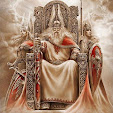The Curious Case of Benjamin Button is a 2008 American fantasy romantic drama film directed by David Fincher. The storyline by Eric Roth and Robin Swicord is loosely based on the 1922 short story of the same name by F. Scott Fitzgerald. The film starts Brad Pitt as a man who ages in reverse and Cate Blanchett as the love interest throughout his life.
The film also stars Taraji P. Henson, Mahershala Ali, Julia Ormond, Jason Flemyng, Elias Koteas and Tilda Swinton. Producer Ray Stark bought the film rights to do the short story in the mid-1980s with Universal Pictures backing the film, but struggled to get the project off the ground until he sold the rights to producers Kathleen Kennedy and Frank Marshall in the 1990s.
Alghough it was moved to Paramount Pictures in the 1990s, the film did not enter production until after Fincher and Pitt signed on along with the rest of the cast in 2005. Principal photography began in November 2006 and wrapped up in September 2007. Digital Domain worked on the visual effects of the film, particularly in the process of the metamorphosis of Pitt's character.
The Curious Case of Benjamin Button was released in North America on December 25, 2008 to positive reviews from critics, who praised Fincher's directing, Pitt's performance, production values, and visual effects. The film was a box office success, grossing 335.8 million dollars worldwide against its 167 million dollars budget.
The film received thirteen Academy Award nominations, the most of the 81st Academy Awards, including Best Picture, Best Director for Fincher, Best Actor for Pitt, and Best Supporting Actress for Taraji P. Henson, and won three, for Best Art Direction, Best Makeup, and Best Visual Effects. About the plot we have to tell, in August 2005, Daisy Fuller is on her deathbed in a New Orleans hospital as Hurricane Katrina approaches.
She tells her daughter Caroline, about blind clockmaker Mr. Gateau, hired to make a clock for a train station in 1918. When it was unveiled, the public was surprised to see it running backwards. She reveals that Mr. Gateau made it as a memorial for those who lost their sons in World War I, including his own son. Daisy then asks Caroline to read aloud from Benjamin Button's diary.
On the evening of November 11, 1918, a boy is born with the appearance and maladies of an elderly man. His mother, Caroline, dies soon after childbirth and his father, Thomas Button, abandons the infant on the porch of a nursing home. Caretaker Queenie and cook Mr. Tizzy Weathers find the baby, and she raises him as her own, naming him Benjamin.
As the years pass, Benjamin physically blends in with the elderly residents but has the mind and curiosities of a child. He eventually transitions from a wheelchair to crutches and learns to walk. He befriends visiting African Pygmy named Oti, who teaches him to look beyond the physical, and resident Mrs. Maple, who teaches him to play de piano.
On Thanksgiving 1930, Benjamin meets seven-year-old Daisy, whose grandmother lives in the nursing home and they connect instantly. Later, he accepts work on the tugboat Chelsea captained by Mike Clark. Thomas Button introduces himself to Benjamin, but does not reveal his true identity. In Autumn 1936, Benjamin leaves for a long-term work engagement with the tugboat crew and travels around the world...





















































